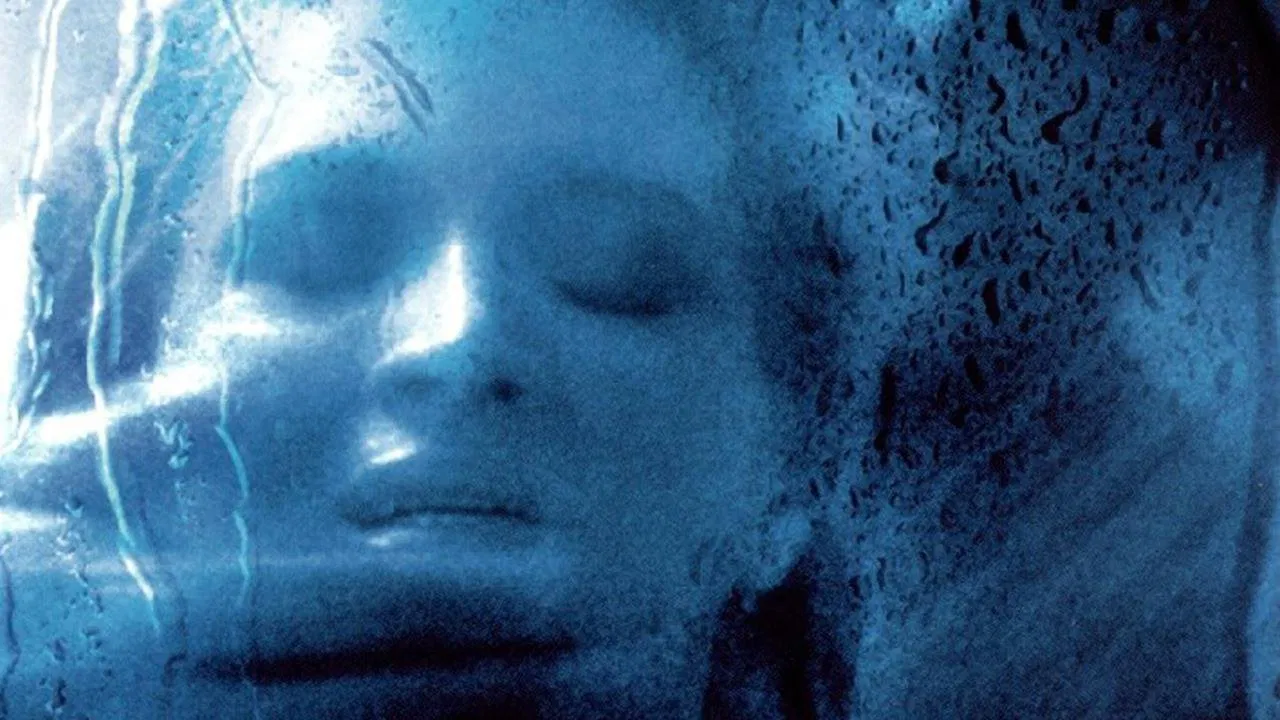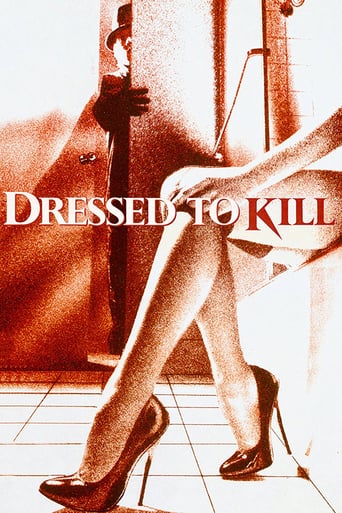

Tied for the best movie I have ever seen
... View MoreIt’s fine. It's literally the definition of a fine movie. You’ve seen it before, you know every beat and outcome before the characters even do. Only question is how much escapism you’re looking for.
... View MoreOk... Let's be honest. It cannot be the best movie but is quite enjoyable. The movie has the potential to develop a great plot for future movies
... View MoreTrue to its essence, the characters remain on the same line and manage to entertain the viewer, each highlighting their own distinctive qualities or touches.
... View MoreBrain DePalma channels Alfred Hitchcock and delivers a thriller about sexual repression and murder.Kate Miller (Angie Dickinson) is a sexually frustrated housewife who is in therapy with New York City psychiatrist Dr. Robert Elliott (Michael Caine). During an appointment, Kate attempts to seduce him, but Elliott rejects her advances.The rejection sends Kate into a tailspin in which puts the viewer on journey of darkest part of the human experience. Not a great film but worth watching but its RATED R for a reason
... View MoreThings have changed, of course, and it is now frowned upon to be the least critical of trans anything and here the blending of gender bending with the suggestion that it equates with paranoid schizophrenia is considered completely out of order. Cinematically it is another matter and here De Palma is gloriously updating ideas raised in Hitchcock's original film, even in how he deals with the female lead. Apart then from the possibly dubious set-up and that rather over extended dream sequence (although it made me smile, as intended, I'm sure) this is a fantastically effective thriller more or less in the Italian gialli mould. One senses the director's glee as he proceeds from one amazing sequence to another. Thrilling, sexy, amusing and tense, this is an extraordinary achievement.
... View More**** May contain strong spoilers ****This is a review made by StoneDraim... and that means that if you want to read a probably different kind of review, keep reading....This is my personal experience, my personal point of view/perspective and my personal opinion... and my opinion is just one of like 7 billions in this world.Typical Brian De Palma movie magic, this movie begins like a blend of a romantic adult scene and a deeply psychological thriller with a little touch of "Psycho". Were I surprised and a little chocked over all the details that were shown during the woman's shower? Yes, I was.About 16 minutes into this one, there is an epic scene where the lady is at an art gallery. Her emotions and impressions is very effectively enhanced by the wonderful orchestra doing the music in a almost Italian sense of way. Her desperation is matched perfectly by the strings. Just the fact to give about 5 minutes of a movie describing a sexual frustrated woman's own inner war in chasing a man, then turning the back to the man, losing her glove to the man and chasing him in a subtle way is fantastic! These five minutes following the opening scene is showing what is going on inside of her. A successful lady bored of life and starting to walk the edge of experimental minds a little too much... to the edge of madness.Brian De Palmas usual technique of camera angles and zoomings blended together with close shots is all over the place and gives "Dressed to kill" that special Mr. De Palma touch.Amazing work on the script. Almost 35 minutes of the entire movie is spent to the woman and her life in more than one way. Then she is killed and the main character is suddenly all gone... the story turns around and continues with other characters following that. Piece of art! The killing is very intense and blood is floating everywhere. The razor is drawn along the woman's throat and in details I can witness the brutality. From a observation in psychology into this immediately and effective turn. Well done, Mr. De Palma!1 hour and 35 minutes... I am in awe! Like a psychological version of an insane asylum with the touch of....yes... Dracula.... with an escaping patient rounding it off in "Psycho" way!Over to the movie as a product: - The production : Brian De Palma. All through a great production from 1980. Pino Dinaggio's score lifts it up a great deal. - The actors : Michael Caine is.... Michael Caine; hooray! He delivers every time. Nancy Allen.... I saw Robocop and went crazy on her good skills. Now... well....... From 1980 to 1987 of Robocop, she made the major leap, let me tell you that. Besides that, good acting on the behalf of the other actors. Dennis Franz is making a hilarious portray of a little over the edge experienced civil "cop". - The story : Major twists makes this a solid top notch story. From a little intense drama to a combination of thriller, crime and detective mystery thing. - Entertainment : Hard to really appreciate it to the fullest 36 years later. Even so... more than good. - Age : 15. A good old slashing makes the age pop up more than 5 years.7,0 out of 10. (The final rate is based most on my own entertainment of the movie. Short elucidation of the rating: 7 Well made movie. Proper entertainment.)
... View MoreDressed to Kill (1980) *** (out of 4) Brian DePalma's surreal thriller about a psychiatrist (Michael Caine), a hooker (Nancy Allen) and a victim's son (Keith Gordon) who try to find a female killer stalking them.If that plot description sounds really stupid then I do apologize but I'm going to try and protect you from spoilers. DePalma's DRESSED TO KILL is pretty much a remake of a certain movie but I'm not going to mention that movie, that movie's plot or that movie's filmmaker just to prevent major and obvious spoilers. Once you've seen this film you'll undoubtedly know what movie I'm talking about. It's funny but DRESSED TO KILL really divides fans and critics because some call it a masterpiece while others call it a piece of trash that hides behind that other film.For me personally, I think there's a masterpiece hidden here but sadly there are enough flaws that really keep it from being a great movie. I will start off with the flaws but the screenplay itself and the story are quite stupid and at times you really have to shake your head. I'd argue that the story really doesn't make too much sense but I honestly believe DePalma knew this and didn't care one way or another because his main goal was to create a visual, sexual and sensual thriller that packed a punch and the film certainly does that.There are really three stars to this picture and it's DePalma, the music by Pino Donaggio and the cinematography by Ralf D. Bode. The three of them work so perfectly together because the film really is just a sympathy of thrills. Again, the story really doesn't matter as it's so far in the background. The real magic and tension comes from the countless silent moments where the camera just glides around to the music and DePalma works to build up suspense. There's the sexuality of the opening sequence. The surreal nature of the art museum. I won't even get started on the three endings to the picture.DePalma certainly paints one of the more beautiful thrillers of the decade and throw in the weird sexuality and you've got quite the picture. The performances are also quite good with everyone filling their roles nicely. Allen is charming as the street-wise hooker. Caine is believable as the doctor. Gordon plays a nerd like no other actor in history. Angie Dickinson brings a certain flare as does Dennis Franz as the detective.DRESSED TO KILL could have and should have been a "great" movie but as it stand, the film is quite powerful in its own right.
... View More